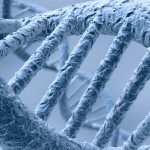Link to Pubmed [PMID] – 19232555
Am. J. Hum. Genet. 2009 Mar;84(3):316-27
MicroRNAs (miRNAs) are noncoding RNAs involved in posttranscriptional gene repression, and their role in diverse physiological processes is increasingly recognized. Yet, few efforts have been devoted to evolutionary studies of human miRNAs. Knowledge about the way in which natural selection has targeted miRNAs should provide insight into their functional relevance as well as their mechanisms of action. Here we used miRNAs as a model system for investigating the influence of natural selection on gene regulation by characterizing the full spectrum of naturally occurring sequence variation of 117 human miRNAs from different populations worldwide. We found that purifying selection has globally constrained the diversity of miRNA-containing regions and has strongly targeted the mature miRNA. This observation emphasizes that mutations in these molecules are likely to be deleterious, and therefore they can have severe phenotypic consequences on human health. More importantly, we obtained evidence of population-specific events of positive selection acting on a number of miRNA-containing regions. Notably, our analysis revealed that positive selection has targeted a “small-RNA-rich island” on chromosome 14, harboring both miRNAs and small nucleolar RNAs, in Europeans and East Asians. These observations support the notion that the tuning of gene expression contributes to the processes by which populations adapt to specific environments. These findings will fuel future investigations exploring how genetic and functional variation of miRNAs under selection affects the repression of their mRNA targets, increasing our understanding of the role of gene regulation in population adaptation and human disease.


